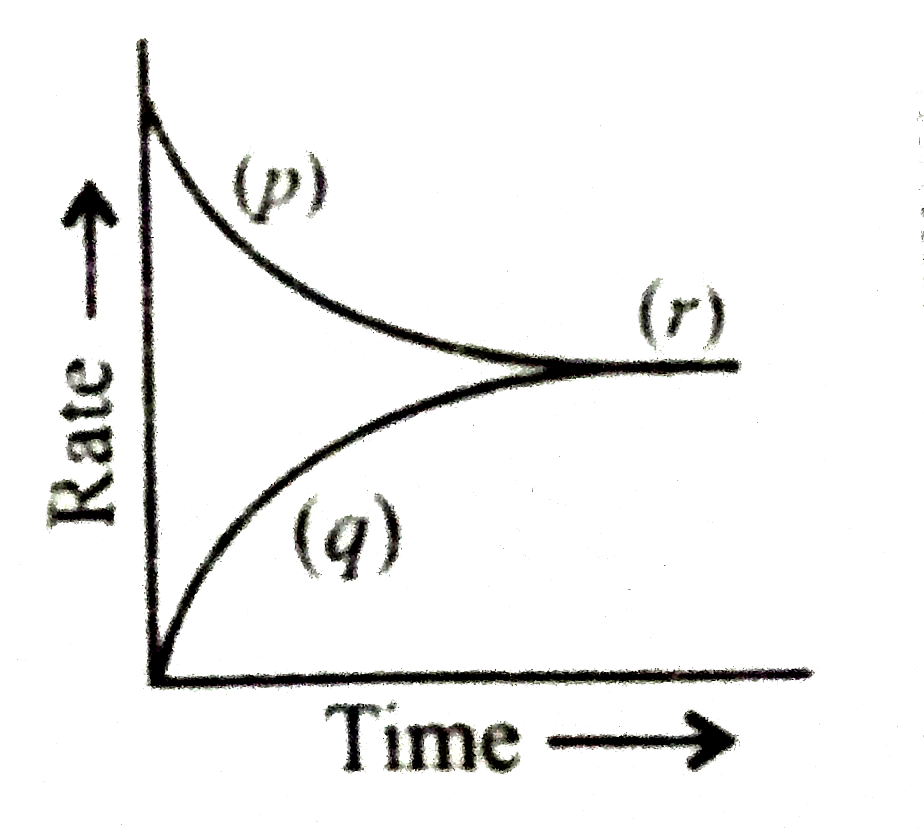For a given reaction 3A + B → C + D the rate of reaction can be represented by:
−13d[A]dt=−d[B]dt=+d[C]dt=+d[D]dt
−13d[A]dt=+d[A]dt=k[A]m[B]n
+13d[A]dt=−d[C]dt=k[A]n[B]m
None of these
The correct Answer is:A
To derive the differential rate equation for the reaction 3A+B→C+D, we can follow these steps:
Step 1: Write the general form of the rate of reaction
The rate of a reaction can be expressed in terms of the change in concentration of reactants and products over time. For the given reaction, we can express the rate as:
Rate=−13d(A)dt=−d(B)dt=d(C)dt=d(D)dt
Here, the negative sign indicates that the concentration of reactants decreases over time, while the positive sign indicates that the concentration of products increases.
Step 2: Apply stoichiometric coefficients
In the reaction 3A+B→C+D, the stoichiometric coefficients are 3 for A and 1 for B. This means that for every 3 moles of A that react, 1 mole of B reacts. Therefore, we need to account for these coefficients in our rate expressions:
- For A: The rate of disappearance is given by −13d(A)dt.
- For B: The rate of disappearance is given by −d(B)dt.
- For C: The rate of appearance is given by d(C)dt.
- For D: The rate of appearance is given by d(D)dt.
Step 3: Set up the differential rate equation
From the above expressions, we can set up the differential rate equation as:
−13d(A)dt=−d(B)dt=d(C)dt=d(D)dt
Step 4: Finalize the differential rate equation
Thus, the complete differential rate equation for the reaction 3A+B→C+D can be summarized as:
−13d(A)dt=−d(B)dt=d(C)dt=d(D)dt
Conclusion
The differential rate equation captures the relationship between the rates of change of concentrations of reactants and products in the reaction.
---
The rate of a reaction can be expressed in terms of the change in concentration of reactants and products over time. For the given reaction, we can express the rate as:
Rate=−13d(A)dt=−d(B)dt=d(C)dt=d(D)dt
Here, the negative sign indicates that the concentration of reactants decreases over time, while the positive sign indicates that the concentration of products increases.
In the reaction 3A+B→C+D, the stoichiometric coefficients are 3 for A and 1 for B. This means that for every 3 moles of A that react, 1 mole of B reacts. Therefore, we need to account for these coefficients in our rate expressions:
- For A: The rate of disappearance is given by −13d(A)dt.
- For B: The rate of disappearance is given by −d(B)dt.
- For C: The rate of appearance is given by d(C)dt.
- For D: The rate of appearance is given by d(D)dt.
From the above expressions, we can set up the differential rate equation as:
−13d(A)dt=−d(B)dt=d(C)dt=d(D)dt
Thus, the complete differential rate equation for the reaction 3A+B→C+D can be summarized as:
−13d(A)dt=−d(B)dt=d(C)dt=d(D)dt
The differential rate equation captures the relationship between the rates of change of concentrations of reactants and products in the reaction.
Similar Questions
Knowledge Check
For a given reaction 3A+B→C+D the rate of reaction can be represented by
A−13d[A]dt=−d[B]dt=+d[C]dt=+d[D]dtB−13d[A]dt=d[C]dt=K[A]m[B]nC+13d[A]dt=−d[C]dt=K[A]n[B]mDNone of theseFor the reaction 2A+3B→4C the rate of reaction may be represented as
Ar=−2d[A]dt=−3d[B]dt=4d[C]dtBr=−6d[A]dt=−4d[B]dt=3d[C]dtCr=−−12d[A]dt=13d[B]dt=14d[C]dtDr=−12d[A]dt=−13d[B]dt=14d[C]dtFor a reaction . 2P → 3Q , the rate of reaction (r ) can be represented as ______.
Ar=−d[P]dt=d[Q]dtBr=−d[P]dt=13d[Q]dtCr=−12d[P]dt=13d[Q]dtDr=12d[P]dt=−13d[Q]dt
For the reaction ,A+2B→C, the rate of reaction at a given instant can be represented by __________.
View SolutionFor the reaction x+2y→3z the rate at a given instant of time can be represented as:
View SolutionIn the reaction 3A→2B, rate of reaction +d[B]dt is equal to :
View SolutionStatement-1: For the reaction 2A+B→C, the rate of disappearance of A is twice the rate of disappearance of A is twice the rate of disappearance of B.
Statement-2: For the reaction : 2A+B→C Rate of reactions is d[C]dt
View SolutionFor the reaction,
3A+2B→C+D,
the differential rate law can be written as:
View Solution

